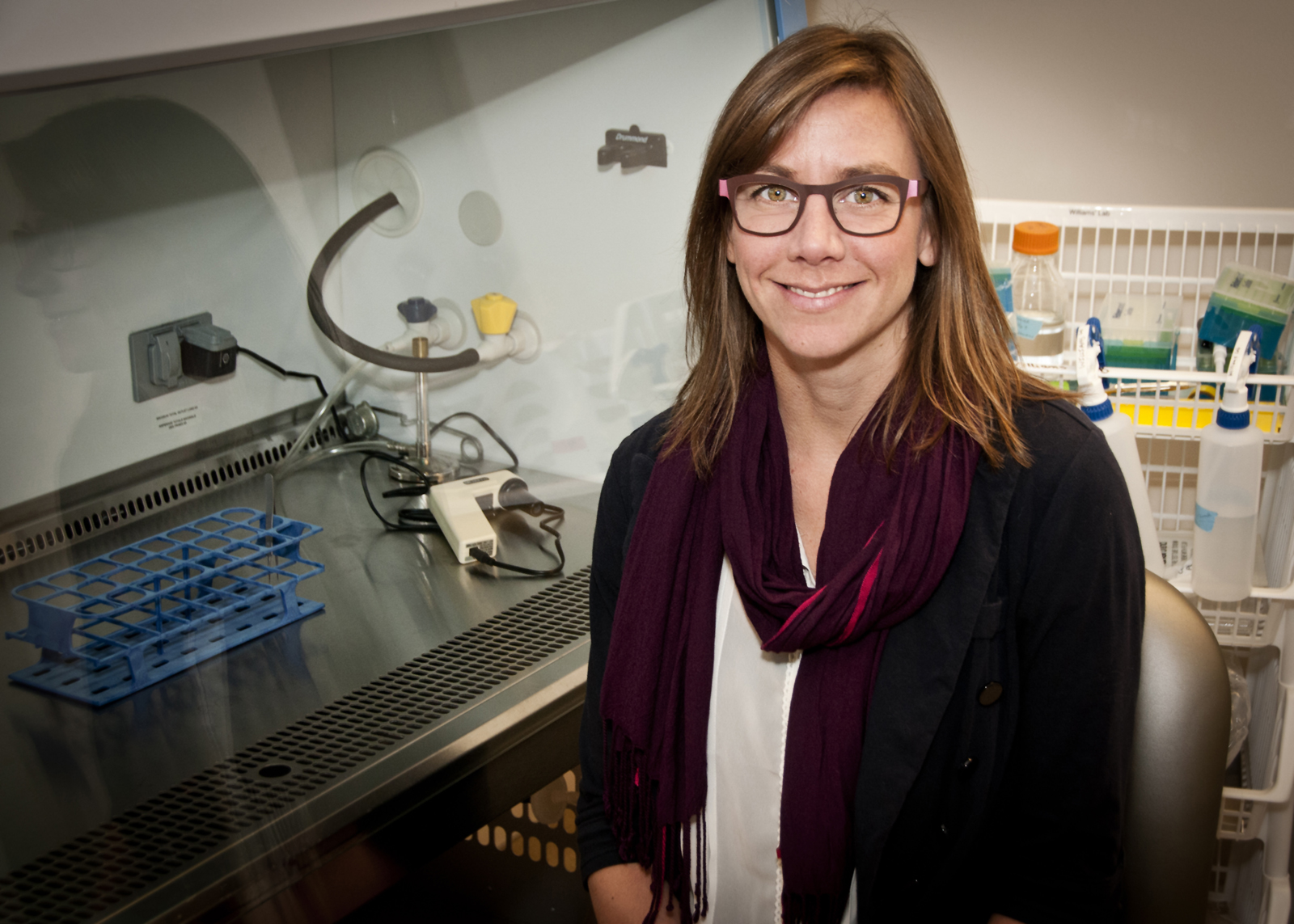Megan Williams
Professor of Neurobiology
Neurobiology, Molecular Mechanisms of Synapse Formation

Molecular Biology Program
Education
B.S. Juniata College
Ph.D. University of California, Santa Cruz
Research
Proper function of the brain depends on precise synaptic connections that arise during development. This feature, known as synaptic specificity, requires that neurons recognize correct synaptic partners, often among many cell types, and then develop appropriate types of synapses. Synaptic defects are thought to underlie many types of mental and cognitive dysfunction, including epilepsy and autism spectrum disorders and despite the importance of specific neural connections, there is very little known about molecular mechanisms that regulate the formation of synaptic specificity in the mammalian brain.
The overall goals of my lab are to:
- identify key molecules required for the development of synaptic specificity
- investigate the molecular mechanisms by which they mediate synapse formation
- understand how defects in synaptic specificity cause neurological disorders
To accomplish these goals, we use the rodent hippocampus as a model system. The hippocampus is an important relay center for cognition and although its connectivity patterns are well understood, very little is known about how specific connections develop and what the consequences are of a mis-wired circuit on learning and memory. Surprisingly, dissociated hippocampal neurons retain many aspects of specificity and largely connect in the culture dish as they do in the brain. Cultured neurons are conducive to genetic and pharmacological manipulations and therefore, provide an unprecedented tool for investigating the molecular basis of synaptic specificity. Cultured neurons are not, however, a complete substitute for the brain. Therefore, we also use a variety of molecular and imaging techniques including transgenic mice, viruses, in utero electroporation, electron and confocal microscopy to investigate how the molecules and mechanisms that we identify in culture function in the intact brain during development, disease, and behavior.
References
- Taylor MR, Martin EA, Sinnen B, Trilokekar R, Ranza E, Antonarakis SE, Williams ME. (2020) Kirrel3-mediated synapse formation is attenuated by disease-associated missense variants. J. Neuroscience. PMCID: PMC7343328
- Basu R, Duan X, Taylor MR, Martin A, Muralidhar S, Wang Y, Gangi-Wellman L, Das SC, Yamagata M, West PJ, Sanes JR, Williams ME. (2017) Heterophilic Type II cadherins are required for high magnitude synaptic potentiation in the hippocampus. Neuron. PMCID: PMC5634529
- Martin EA, Woodruff D, Rawson RL, Williams ME. (2017) Examining Hippocampal Mossy Fiber Synapses by 3D Electron Microscopy in Wildtype and Kirrel3 Knockout Mice. eNeuro. 2017 PMCID: PMC5490256.
- Martin EA, Muralidhar S, Wang Z, Cervantes DC, Basu R, Taylor MR, Hunter J, Cutforth T, Wilke SA, Ghosh A, Williams ME. (2015) The intellectual disability gene Kirrel3 regulates target-specific mossy fiber synapse development in the hippocampus. Elife. 4: e09395. PMCID: PMC4642954.
